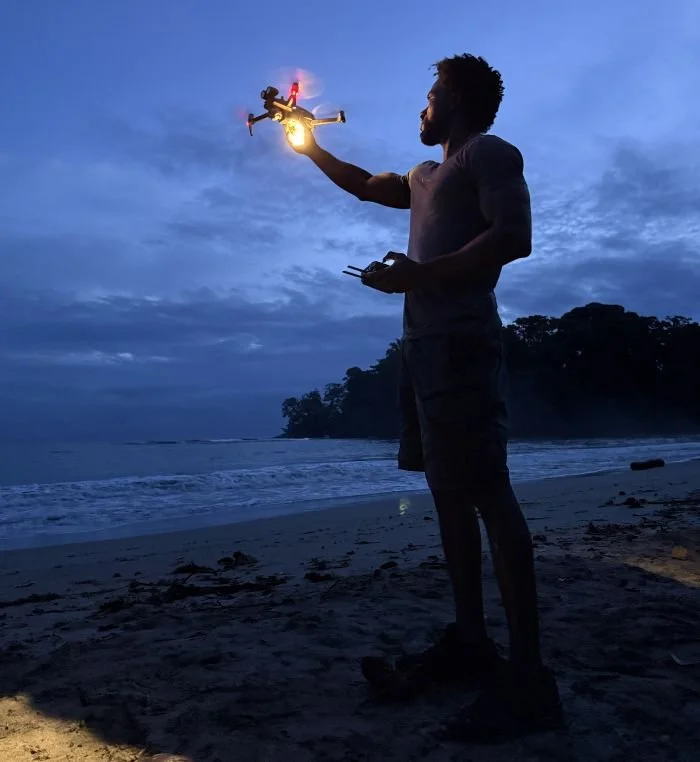Thermal Drones Are Changing the Way We Find Sloths
Trying to count sloths in a rainforest is quite hard: they move slowly, blend perfectly with the leaves, and spend their days tucked high in the canopy. But now, technology is giving conservationists and researchers a powerful new ally: drones that can see heat.
One of our first images of a sloth captured with our drone.
Using thermal drones to locate sloths is not a new concept. In 2022, the first record of a maned sloth detected with a drone was published, and we’re also using this technology in our own research. But as important as it is to test new tools and methods, it’s equally essential to study how effective they truly are.
Testing the Power of Thermal Drones
In a recent study titled “Do Thermal Drones Outperform Traditional Surveys in Detecting and Estimating Population Density of Sloths?” researchers from Brazil’s Laboratório de Ecologia Aplicada à Conservação at the Universidade Estadual de Santa Cruz, together with the Instituto Preguiça-de-Coleira, set out to test whether thermal drones could outperform traditional ground surveys in finding the endangered maned sloth (Bradypus torquatus).
Thermal drones spotted sloths three times faster and in twice as many places as human observers walking below. While field teams needed more than 50 hours to locate nine individuals, drones found ten sloths in less than 14 hours. That’s a game-changer for species that are nearly invisible from the ground.
Comparison of the efficiency and effectiveness of survey methods. Comparison of the efficiency (A) and effectiveness (B) of thermal drone and ground-based survey methods for detecting and estimating the density of maned sloths in the Praia do Forte district, Mata de São João, Bahia, Brazil. Dashed lines connect paired samples.
The researchers also looked at cost. Drones are expensive to buy, but they save so much time that the investment pays off after covering about 740 hectares, or after detecting roughly 38 sloths. Once past that point, drones become the cheaper option for large-scale monitoring.
Perhaps most importantly, sloths didn’t seem to mind the buzzing visitors. None changed their behavior, showing that thermal drones can collect data without stress or disturbance.
Images of maned sloths. (A) Visible (RGB) and (B–D) thermal infrared (TIR) images of sloths obtained with drones on sunny days at three different times: 6:00 AM (B), 8:00 AM (C), and 10:00 AM (D).
The Bigger Picture for Conservation
The takeaway is simple: drones aren’t replacing people, but they’re transforming how we study and protect wildlife. Combining aerial thermography with traditional fieldwork help scientists map where sloths still live, or monitor how populations recover when forests are restored.
Our drone pilot, Dayber, preparing for the first flight of the day early in the morning.
Why This Matters to Us
Knowing the number of sloths living in the wild is crucial to understanding their population status and informing effective conservation strategies. Right now, most sloth species are listed as Least Concern on the IUCN Red List, but there’s little real data to support that.
Read More: How Concerning is Least Concern?
Determined to change this, we launched The Great Sloth Census, the first project aimed at estimating sloth populations across Costa Rica.
When we started, we tested three methods: a scat detection dog named Keysha, human observers, and thermal drones. After a couple of years, we decided to continue with the two most reliable methods: human observers and drones.
Our research is still ongoing, and while it’s difficult to directly compare our early results with those from Brazil (since we work with different species and habitats), their findings are helping us fine-tune our approach.
Every new study like this brings us closer to understanding sloth populations and how to protect them better. The more data we gather, and the more innovative the tools we use, the better the future for sloths.







